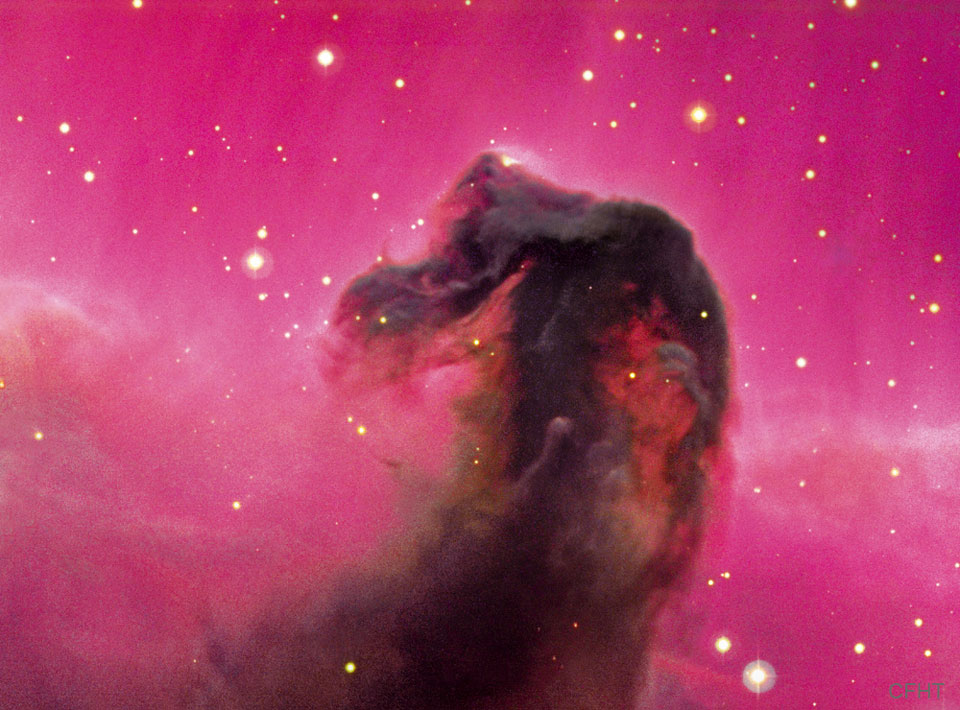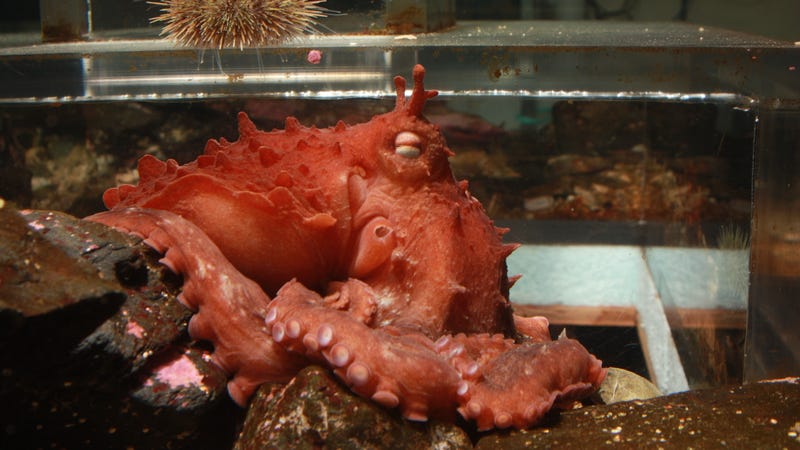We begin with a familiar sight: the Horsehead Nebula. This image was taken by the 3.6-m Canada-France-Hawaii Telescope in Hawaii.
The red glow originates from hydrogen gas predominantly behind the nebula, ionized by the nearby bright star Sigma Orionis. The darkness of the Horsehead is caused mostly by thick dust, although the lower part of the Horsehead's neck casts a shadow to the left. Streams of gas leaving the nebula are funneled by a strong magnetic field. Bright spots in the Horsehead Nebula's base are young stars just in the process of forming.
Located 530 light-years from Earth in the constellation of Grus (The Crane), π1 Gruis is a cool red giant. It has about the same mass as our Sun, but is 700 times larger and several thousand times as bright. Our Sun will swell to become a similar red giant star in about five billion years.
Researchers have now learned that the giant Pacific octopus (GPO)—the largest known octopus on Earth, ranging from California to Alaska to Japan—is actually two species.
The red glow originates from hydrogen gas predominantly behind the nebula, ionized by the nearby bright star Sigma Orionis. The darkness of the Horsehead is caused mostly by thick dust, although the lower part of the Horsehead's neck casts a shadow to the left. Streams of gas leaving the nebula are funneled by a strong magnetic field. Bright spots in the Horsehead Nebula's base are young stars just in the process of forming.
Cassiopeia A, near the end of its stellar life, as seen by the Chandra X-ray Observatory.
Collapsing from vast cosmic clouds, their nuclear furnaces ignite and create heavy elements in their cores. After a few million years, the enriched material is blasted back into interstellar space where star formation can begin anew. The expanding debris cloud known as Cassiopeia A is an example of this final phase of the stellar life cycle. This false-color image shows the still hot filaments and knots in the Cassiopeia A remnant. Still expanding, the blast wave is seen as the blue outer ring.
The surface of a distant star, thanks to The European Southern Observatory (ESO).
Say hello to a new species of giant octopus, the Frilled Giant Pacific Octopus.
Researchers have now learned that the giant Pacific octopus (GPO)—the largest known octopus on Earth, ranging from California to Alaska to Japan—is actually two species.



No comments:
Post a Comment